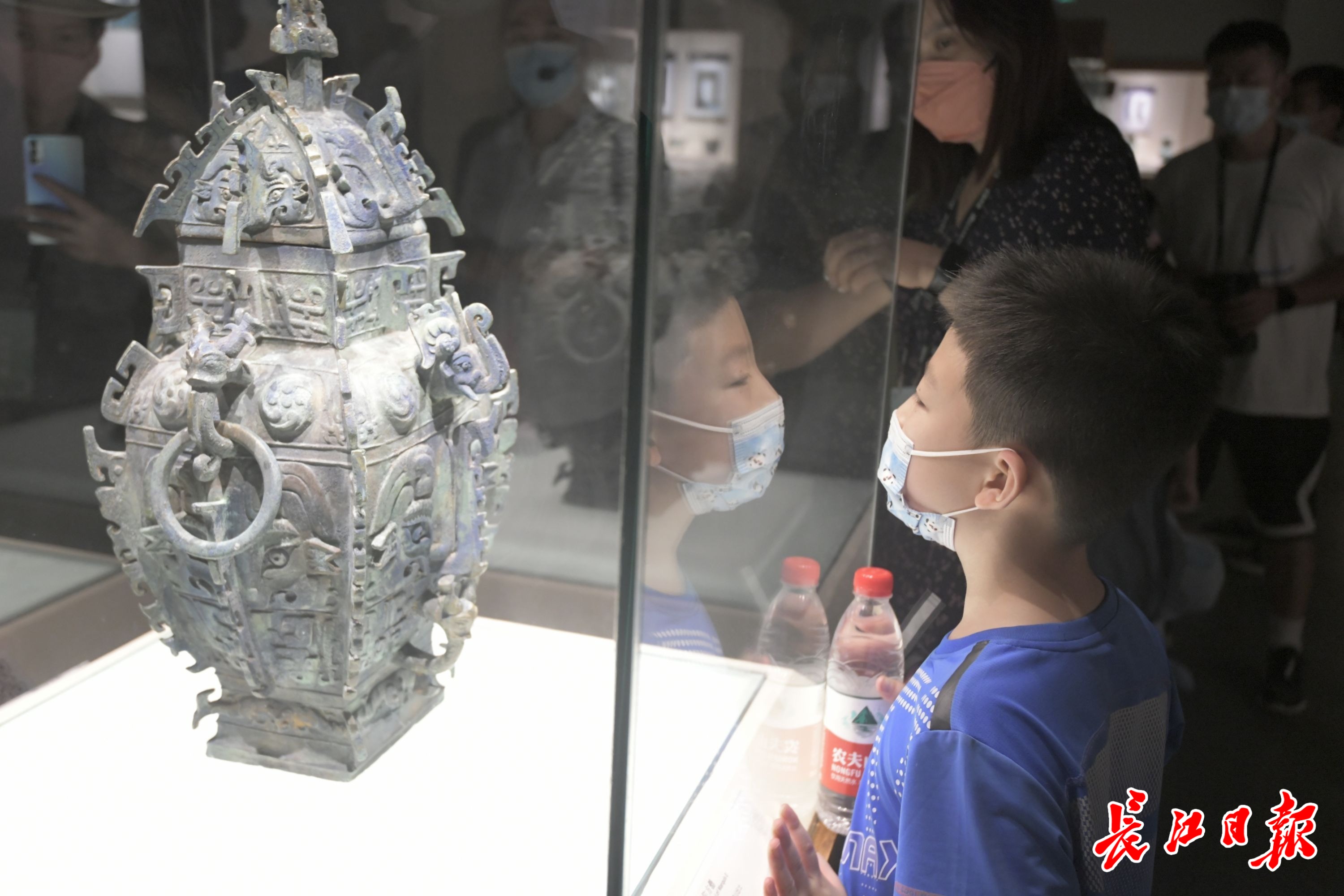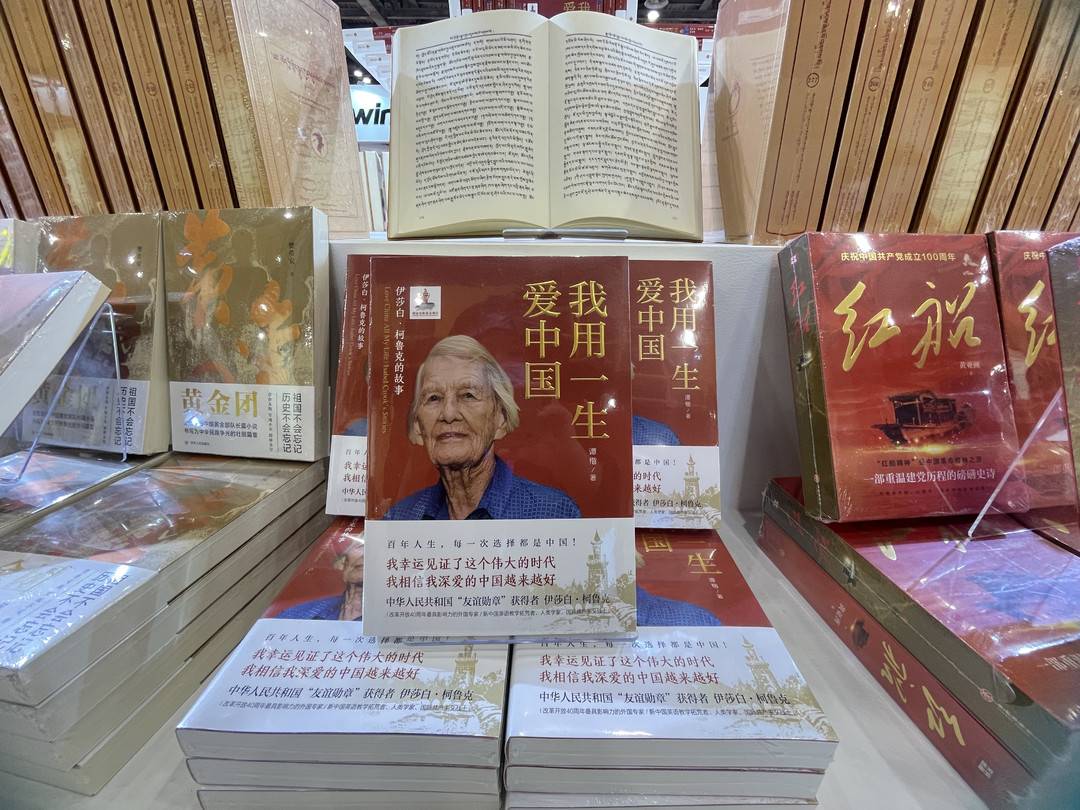"Zeng Houyi Tomb is a" Lile and Music Book "." The visiting delegation reads Jingchu's cultural chapter in the "Bronze Kingdom"
Author:Changjiang Daily Time:2022.08.16

The visiting group was watching the Yehou Fangyi carefully. Photo by Li Ziyun, a reporter from the Yangtze River Daily
The Yangtze River Daily Da Wuhan Client News (Reporter Li Jianhua) On August 3, "Knowing China -Hubei Qianli Yangtze River Bank" in Xiangyang Metropolitan Circle Come to Suizhou in the morning, worshiped the hometown of Emperor Yan, and came to Suizhou in the afternoon. The museum, body tastes the bright chapter of Jingchu culture.
Unveil the veil of the mysterious ancient country
The Deputy Director of the Archaeological Institute of the Suizhou Museum was promoted to the visiting group. The Suizhou Museum is a national first -class museum that integrates cultural relics, scientific research, publicity education, cultural relics archeology, and cut clocks. Known as the "Bronze Kingdom".
Entering the museum, a bronze ware, named "Nighty E) Hou Fangxuan (Yin Lei), attracted the attention of the visiting group. Everyone watched it around it while listening to the expert's explanation. Li Shuangxue, a member of the visiting group and a college student at the Yangtze River Arts Vocational College of Art Engineering, asked experts, how can this bronze have a monster's face and human eyes?
Later, the explanation of the increase is exactly the biggest feature of "侯 后 罍". This type of "people" with beast -faced "people" strange patterns are unique to the country, and they are not seen by bronze wares in other regions. The main part of this type of bronze is a high -relief face with a bright and bright eyes, and the eyelid structure is similar to human eyes. Because of its existing characteristics of the noodle pattern and freehand freehand, scholars call it "god face pattern".
The reporter noticed that the "God's Face" was curved, as if with a smile, three -dimensional vivid and lifelike.

Yehou Fang Ye, collected by the Suizhou Museum. Photo by Li Ziyun, a reporter from the Yangtze River Daily
After further introduction, in 2007, archaeologists rescued a tomb in the early Western Zhou Dynasty in Yangzishan, Suizhou, and unearthed 27 bronze heavy wares, of which 9 of them were cast as "night" inscriptions. The mysterious ancient country of the country.
"Historical Records of Yin Benji" records: "Sibacchang, Jiuhou, Ehou as the three male ... Empo is urgent and discerned, so it is preserved and Ehou." Hou Gong said that Hubei said that it can be seen. In the end of Yin, the night country came with businessmen and was affiliated to the Shang Kingdom with the Zhou people. E Hou ranked San Gong, showing that there was a very powerful force, a clan of an ancient old.
"This archeological discovery allows people to have the opportunity to understand the night kingdom that was active between Hanhuai during the Western Zhou Dynasty. It also made us realize that the earliest source of Hubei referred to be traced back to the night kingdom of more than 3,000 years ago." Later Han Sheng said.
Wang Wen, a member of the visiting group and deputy director of the city planning and architectural design institute of the Yangtze River Design Group, found that the color of "噩" is not the same as the bronze he had seen before, so he asked the experts.
Later, the explanation of the explanation is that the current handed down or unearthed bronze wares usually present green rust on the surface of the utensils. However, due to the differences in buried conditions such as geological elements and groundwater unearthed from Suizhou, some utensils form a rare blue rust, magnificent and miserable. The freehand face on the bronze of the night country, mysterious smile, and the quiet blue rust show a unique cultural appearance.

The visiting group reads Jingchu culture at Suizhou Museum. Photo by Li Ziyun, a reporter from the Yangtze River Daily
A tomb of Zeng Hou is a "ritual and music book"
Zeng Houyi, who was unearthed in Suizhou in 1978 and the world -famous world, made the visiting members most amazing.
Wang Wenhu, vice president of Suizhou Yanhuang Culture Research Association, introduced that the unearthed by the Behong Houyi bell of the Warring States Period rewrites the history of world music. It is the most discovered, the best preservation, the most comprehensive, and most magnificent. The highest achievements of China's pre -Qin Lile and Music civilization and bronze casting technology have been called "the eighth wonders of the ancient world" and "the symbol of the ancient world" by Chinese and foreign experts and scholars. In January 2002, it was included in the first batch of cultural relics of the exhibition of exhibitions for abroad (border).

Zeng Houyi, Zeng Houyi of Suizhou Museum. Photo by Li Ziyun, a reporter from the Yangtze River Daily
Wu Chaoqun, a member of the visiting group and a reporter from the Hong Kong Business Daily, asked that the world has a high evaluation of the Clock of Zeng Houyi. How can we know its cultural contribution to human society today?
Wang Wenhu shared his latest research experience to the members of the visiting delegation: this is a "ritual and music book" that records the ritual and music system of the Spring and Autumn Period and the Warring States Period. The combination of bronze rituals constitutes the "etiquette" of "ritual and music". There are more than 2,800 words of music inscriptions, which constitutes the largest number of music theoretical documents that can be seen so far, the most complete system, the most content, and the deepest cultural containment. His clothes box completely wrote the name of the twenty -eighth place, which constitutes the "astronomical article" of "Ritual and Music Book". The craftsmanship is considered to be the great achievement of the technology of Qin bronze manufacturing. A large number of bamboo slips unearthed in total, a total of 6696 words, can be regarded as the "miscellaneous articles" of "ritual and music". A tomb of Zeng Houyi is the "Zeng Shu" written by a music language that Zeng people understand the music language that humans understand.
Wang Wenhu said that this "ritual and music book" has global value. Some American scholars wrote that the national pride and joy shown through the Chinese report today should be completely. Today, the Chinese know how their ancestors can achieve an amazing height in music in the 5th century BC, and what our world teaches us what we believe cannot be compared with this achievement.
Wang Wenhu talked about that in 2016, the 10th International Music Archaeological Conference was held in Wuhan. The "East Lake Declaration" signed by the conference pointed out: Zeng Houyi is a unique major discovery in the world. The field occupies an important position, showing the height created by human wisdom in the axis era. Its musical performance is excellent, the rhythm is pure, the sound is rich, and the sound is strong. The way to confirm each other in sound and text preserved human music memories 2400 years ago. Editor's performance. Photo by Li Ziyun, a reporter from the Yangtze River Daily

Editor's performance. Photo by Li Ziyun, a reporter from the Yangtze River Daily

After visiting the essence exhibits, the members of the visiting group were immersed in the Chi Yuewu of the Suizhou Museum playing with Zeng Houyi's chime replica.
Zhou Yongyi, a member of the visiting delegation and a sophomore student of Hubei University of Technology, said that Zeng Houyi bells played the world -renowned music music. This music can cross national borders, span race, and flow to all people's hearts, becoming an important testimony of Chinese civilization.
【Edit: Zhang Jing】
- END -
Publishing more than 2700 Sichuan version of the Sichuan version of the 12th Jiangsu Book Fair published as the main guest group

Cover reporter Zhang Jie Suzhou Photography ReportThe 12th Jiangsu Book Fair, host...
Tour | Zhang Jinhong: Shuangzhong Temple watching flowers
Text/Zhang JinhongThe Mianzhu Shuangzhong Temple is the place I love. The weather in spring and autumn is not hot. Under the shade of the tree, talk with Wenyou taste tea.On that day, several Wenyou W